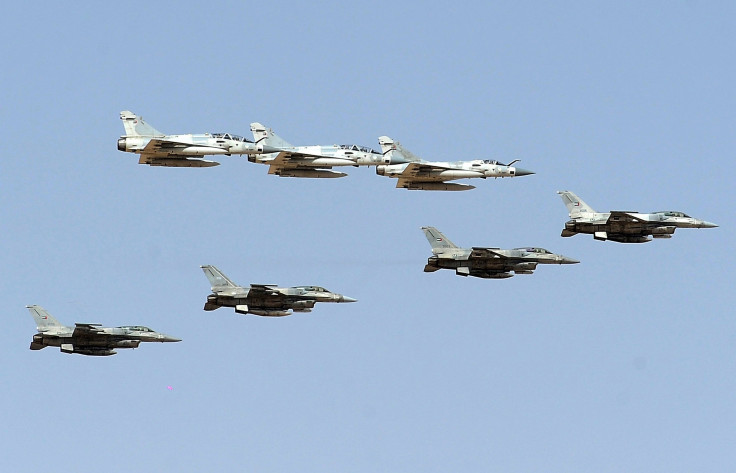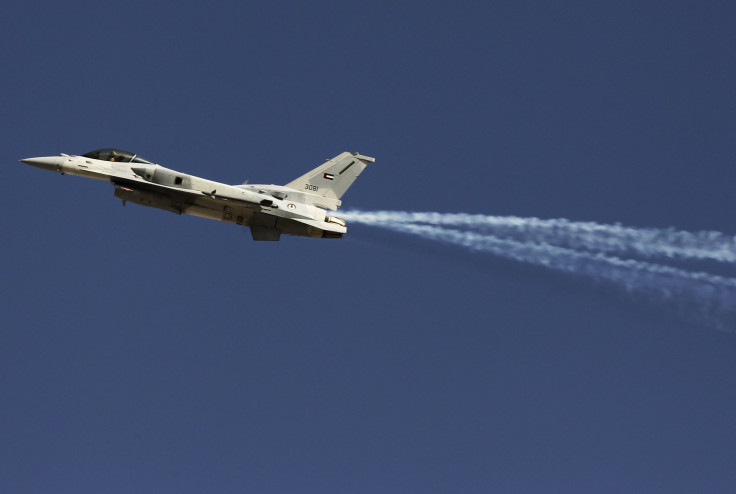If Egypt And United Arab Emirates Hit Libya With Airstrikes, Here's How They Might Have Done It

Last week, airstrikes in Libya hit positions held by militias near Tripoli, but nobody knew who was responsible. Fighters from the city of Misratah, embroiled in the near-civil-war that has engulfed the country, were hit by precision strikes from airplanes of unknown origin. The New York Times revealed Monday the airstrikes were the work of Egypt and the United Arab Emirates, two American allies that acted together without warning the U.S. government. Their intent was to halt the advance of hardcore Islamist militias, part of a strategy to contain the spread of radical, armed Muslim militias in the Middle East.
How did the two Arab nations succesfully carry out precision airstrikes at night from fast-moving jets, a risky, high-tech specialty thought to be the near-exclusive province of the U.S. and its closest allies in NATO? The answer is they used airplanes, weapons and training provided by the U.S. -- whose diplomats were furious, the New York Times reported, at the revelation Washington had not been informed of the strikes.
Neither Egypt nor the UAE has publicly admitted participating in the raids. Egypt has denied it while the Emirates’ government has not made any public comments.
The Times report, which quoted several unnamed U.S. government officials, said Egypt provided the bases while the actual strikes were conducted by the Emirati air force with its own planes and pilots. The Emirates also provided the air-refueling planes needed to get to Tripoli and back.
“The UAE is actually capable of doing something and being quite formidable,” Theodore Karasik, an analyst at the Institute for Near East and Gulf Military Analysis in Dubai, told the Jerusalem Post when the Emirates sent 12 fighter-bombers to participate in the 2011 air campaign that helped oust Libyan dictator Moammar Gadhafi. During that campaign, Emirati pilots took part in bombing raids over Libya, likely gaining the experience needed to perform highly precise airstrikes like those that hit Tripoli last week.
Those jets included six Lockheed Martin F-16E and F models and six French-made Dassault Mirage 2000. The F-16s flown by the Emirates are the most advanced available, a step ahead of the C/D models used by the U.S Air Force, and are equipped with several types of precision strike weapons.
It’s therefore likely some of the about 80 F-16 Desert Falcons currently fielded by the Emirates were used to hit Tripoli. (The Mirages, while also capable of firing precision air-to-ground weapons, are primarily used for air defense and therefore less probable candidates for the Libya strikes.)

Defense Industry Daily reported Emirati pilots began training on the Desert Falcon in Arizona in 2004, and the first jets were delivered in 2005. With a mission range of about 1,000 miles, the F-16s would have needed air refueling to get to Tripoli and back. The military aviation analysis site Scramble said the closest Egyptian air base to the Libyan border is at Mersa Matruh, putting the F-16s at 1,660 miles (1,300 km) to Tripoli and back.
The Emirates’ Airbus A330 flying tankers, recently delivered from the assembly line in France, would have been waiting, probably over the Mediterranean Sea, to refuel the jets.
As for the Libyan’s capability to intercept or repel any intruding jets, that simply does not exist. After Gadhafi’s military was crippled by the 2011 air campaign, the country does not have an effective air force, radar detection systems, or any means of patrolling or defending its airspace. Some Libyan militias may be armed with portable, shoulder-fired anti-aircraft missiles looted or captured from Gadhafi’s forces. But those would be ineffective against jets flying at more than 15,000 feet (4,500 meters), armed with weapons that would allow them to strike precisely from high altitude.
Defense Industry Daily said the Emirates’ F-16s can be equipped with an array of air-to-ground weapons including AGM-154C glide bombs and GBU-39 Small Diameter Bombs, both U.S.-made and capable of hitting targets with extreme precision.
© Copyright IBTimes 2024. All rights reserved.












